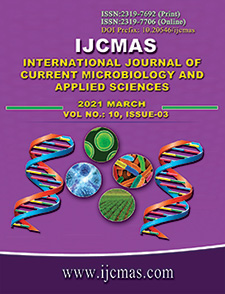


 National Academy of Agricultural Sciences (NAAS)
National Academy of Agricultural Sciences (NAAS)

|
PRINT ISSN : 2319-7692
Online ISSN : 2319-7706 Issues : 12 per year Publisher : Excellent Publishers Email : editorijcmas@gmail.com / submit@ijcmas.com Editor-in-chief: Dr.M.Prakash Index Copernicus ICV 2018: 95.39 NAAS RATING 2020: 5.38 |
To study the integrated effect of chemical fertilizers, bacterial consortia, liquid manures (beejamrutha and jeevamrutha) on yield, nutrient uptake, quality of grain and economics of foxtail millet cultivation, an experiment was conducted during kharif, 2019 at College farm, College of Agriculture, Rajendranagar, PJTSAU. Highest grain yield was obtained with application of 100% RDF + bacterial consortia + liquid manures (T7) which was significantly superior to all the other treatments. Higher Nitrogen and Phosphorus uptake at harvest stage was recorded with100% RDF + bacterial consortia + liquid manures (T7)which was superior to the other treatments. K uptake by the crop was also highest in the above treatment followed by50% RDF + bacterial consortia + liquid manures (T8) which was at par with 100% RDF (T2) or 50% RDF (T3) alone. Similarly the uptake of Zn was also higher in T7 which was superior to RDF alone (T2) and the later was at par with T8and T6 (bacterial consortia + liquid manures).The quality parameters of grain like crude protein and crude fibre content were comparable between T7 and T2; T8 and T3, but superior to sole or combined application of bioagents (T4 or T5 or T6).Significantly higher gross returns were realized in T7 compared to all the other treatments. It was followed by 100% RDF alone (T2). Higher net returns were realized with T7 but it was at par with 100% RDF alone (T2). The benefit: cost ratio obtained with (T2) 100% RDF was the highest and superior to the rest of the treatments including integrated use of 100% RDF and bioagents (T7) but it was the next best treatment.
 |
 |
 |
 |
 |